Shared lighting
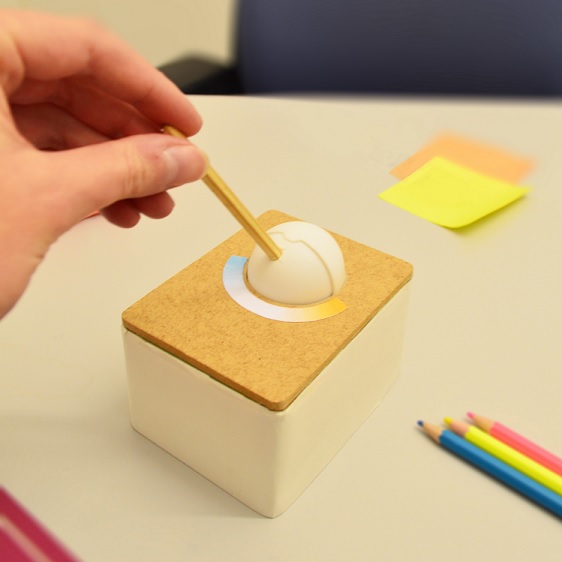
In this project I tried to answer the questions: How can we share control over lighting in a public space and how can we control it in a seamless way? With smart lighting systems people have more control over the kind of light they can have in the room, from brightness to color temperature to location, but controlling light in a work space is more complex than it seems. What happens when you have to take other people's preferences into consideration? How do you control the light when you are preoccupied and don't want to spend too long creating specific settings? As an assistant to a group of PhD students I helped to find out how students in an open work space experienced working with 3 different kinds of shared lighting control concepts. As an individual project I tried to design a personal lighting control system that allows for less attentive and more natural and imprecise control over the lighting.
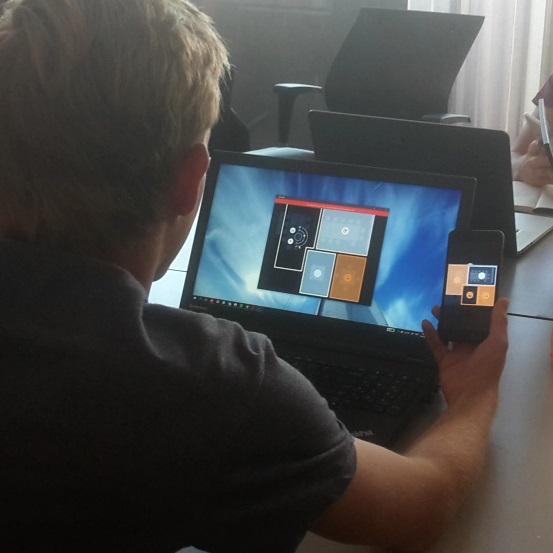
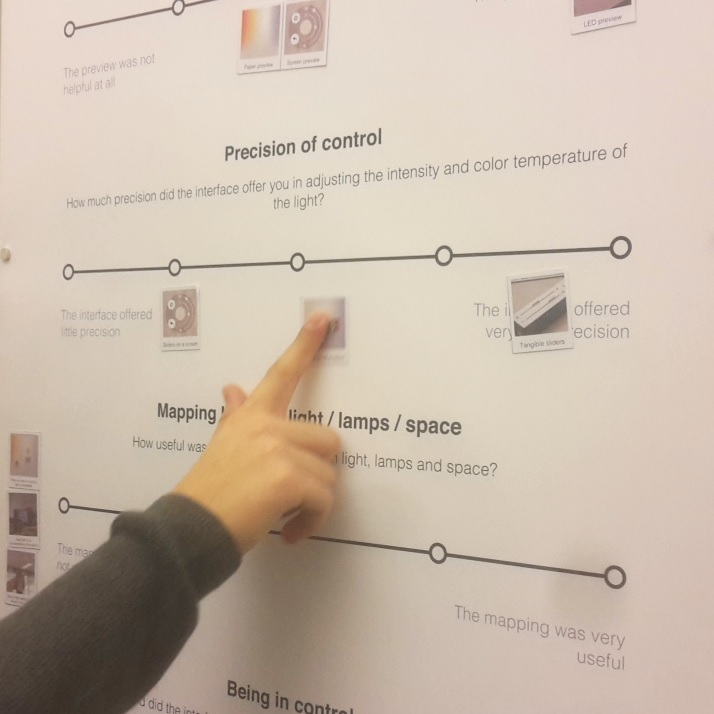
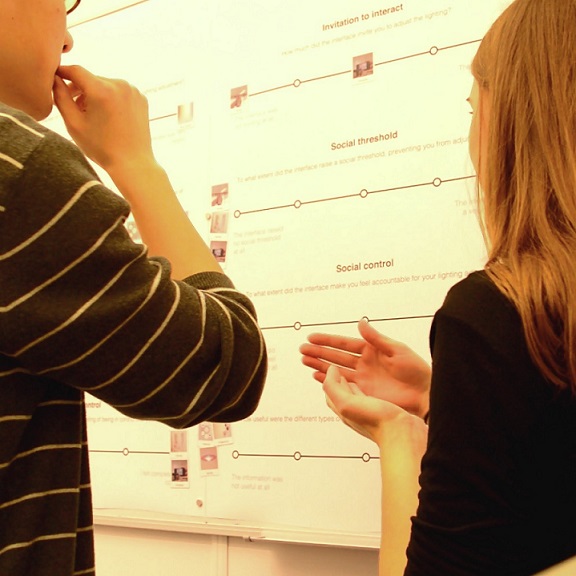
The PhD study that I assisted aimed to find out how students in an open work space would interact with three types of lighting controls, all three had a different level of social translucence (e.g. an anonymous app vs. a public control board) to see how much the students would keep each other's preferences in mind. I interviewed the circa 20 students after every trial with one of the concepts and once more after all three were tried so that they could compare the three. The interviews consisted of asking open ended questions and using 5-point scales. The overall opinion was that being less anonymous when controlling the lights created nice conversations, however, the least anonymous controls were also the most laborious to use so the students would just leave them be.
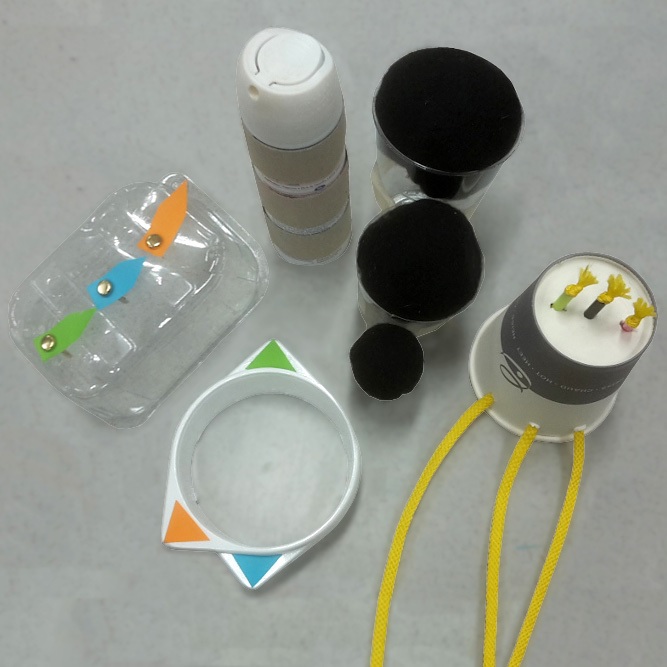
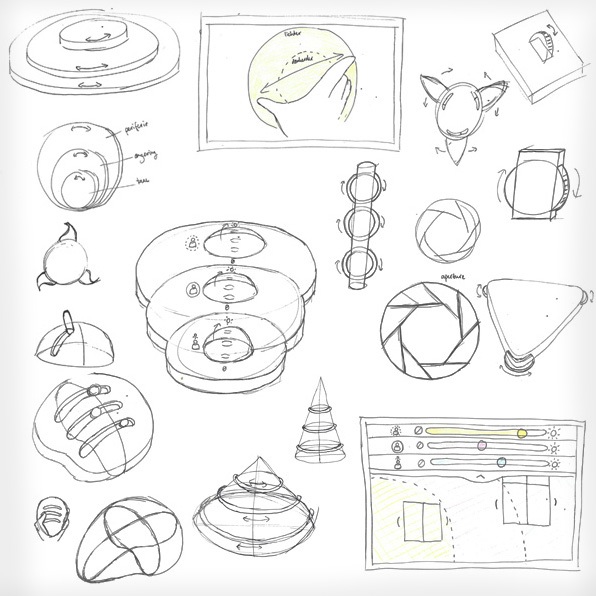
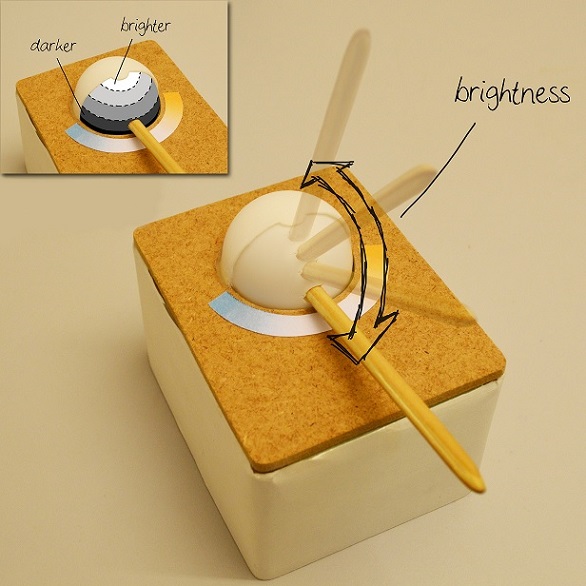
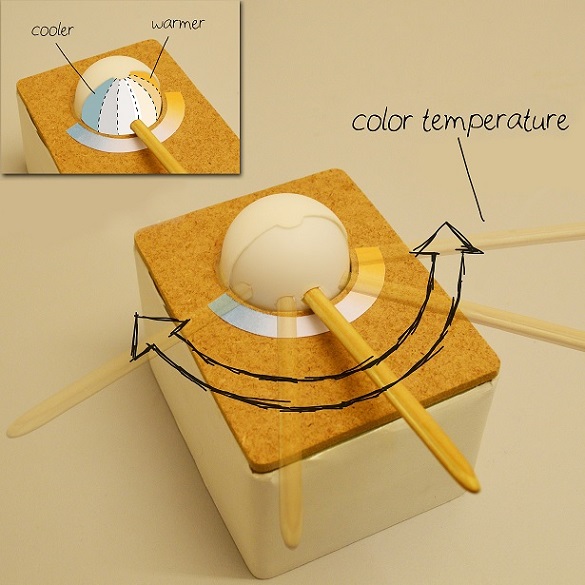
For my individual project I wanted to see how you could make a lighting control system that could be used in a more imprecise and peripheral way compared to an app. I made quick lo-fi prototypes from scrap materials and made sketches to make many different concepts. I settled on a joystick system (also made from lo-fi materials) with a natural mapping of light and dark. The smooth and simple movement should allow for more peripheral interaction so the user's work is not disturbed too much.
I connected the joystick prototype to lights in a test room where I invited people to do a user test. First they got to know the prototype by creating their own light settings like 'cozy' or 'for productive working'. They were then asked to make these settings while working on an Alphabetical Verification Test. This second part was done with the prototype visible and covered with a box. The prototype was very pleasant and easy to use. Ease did not decrease when working on the alphabetical test but it was even easier with the prototype covered up.

